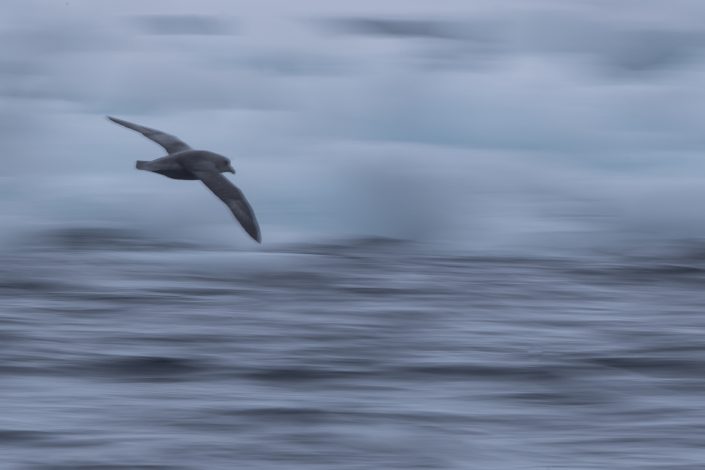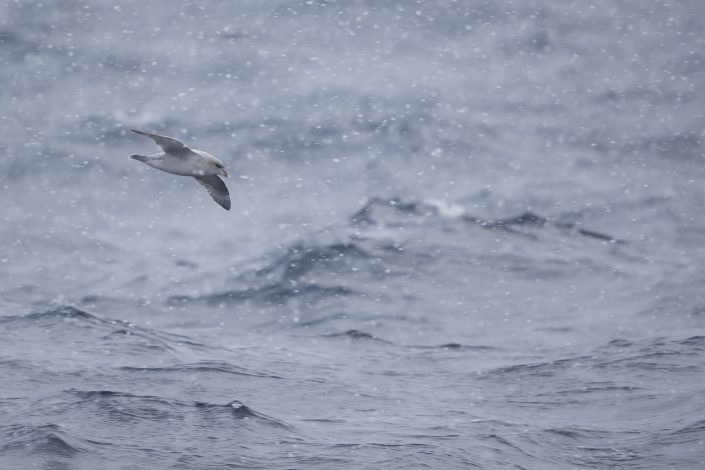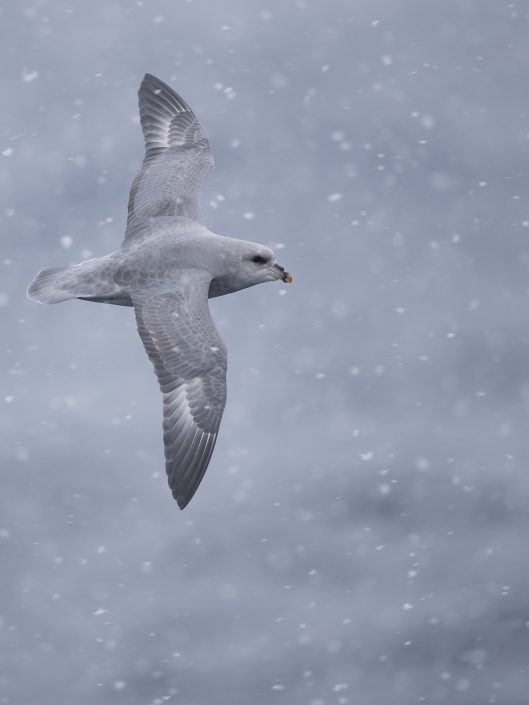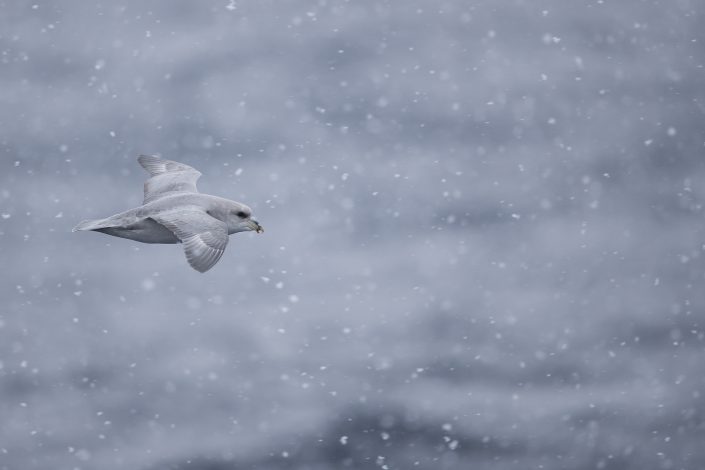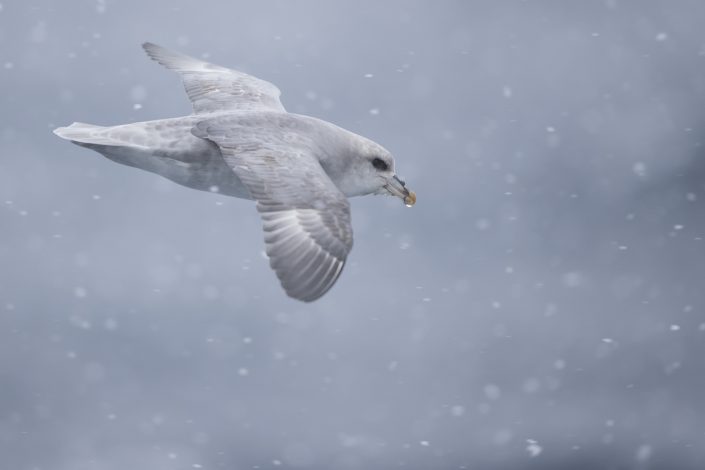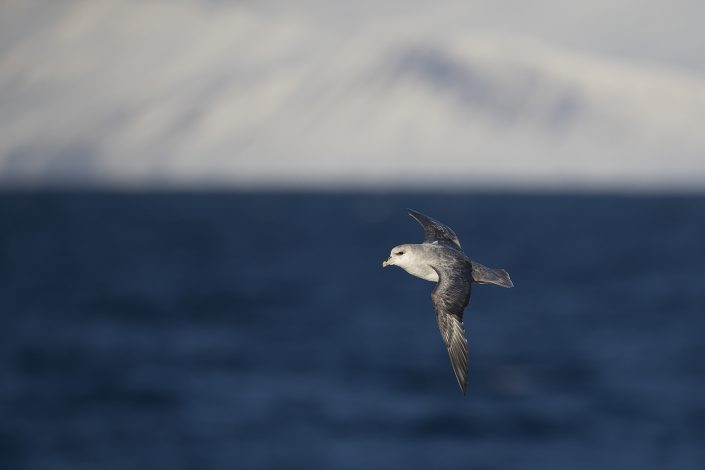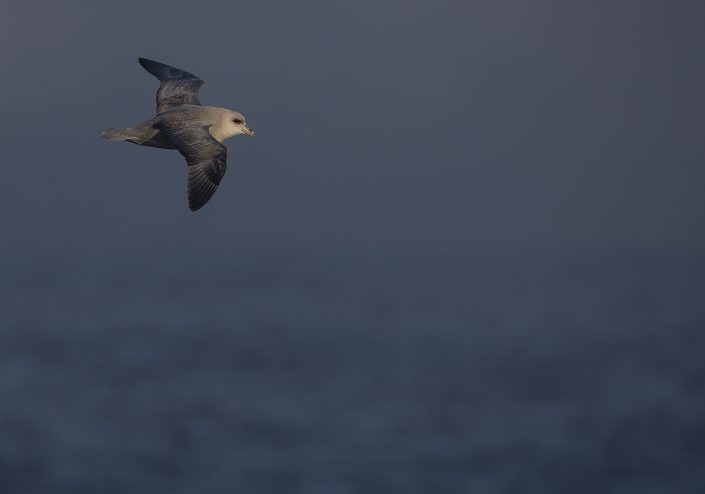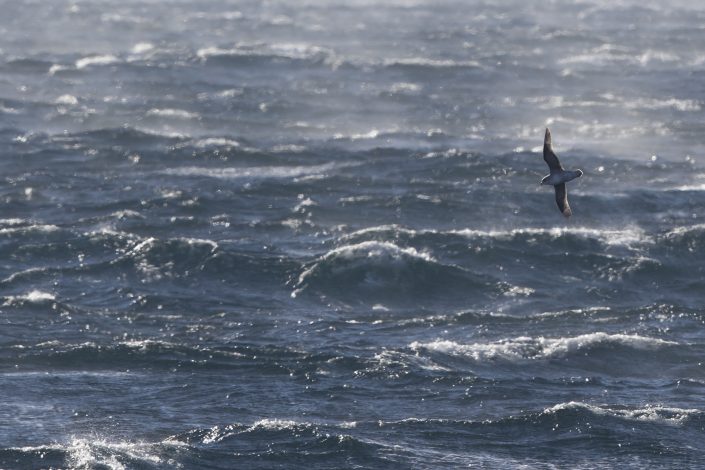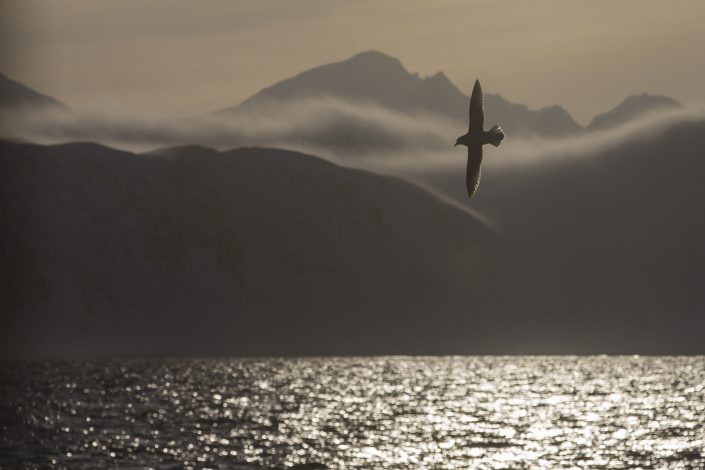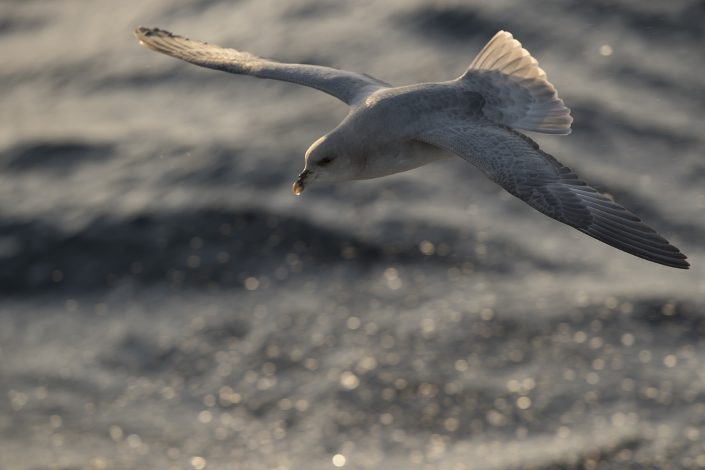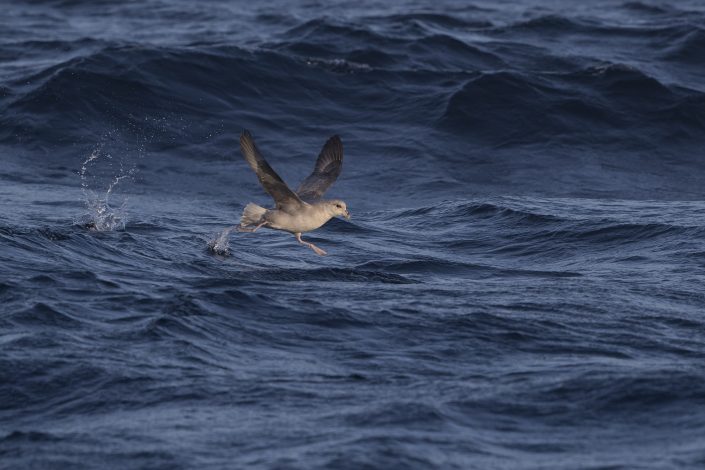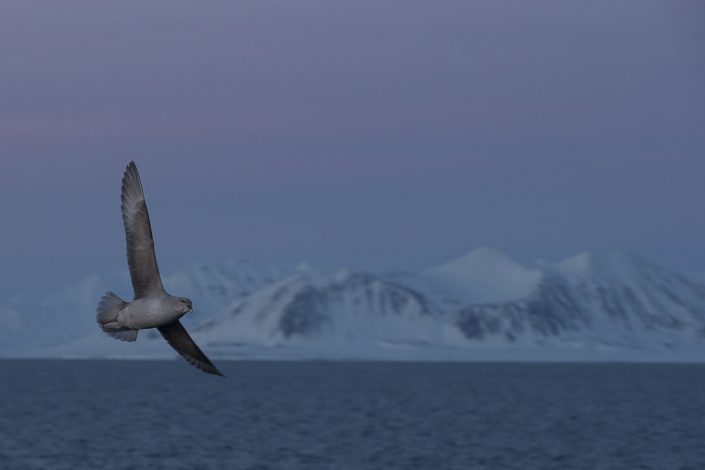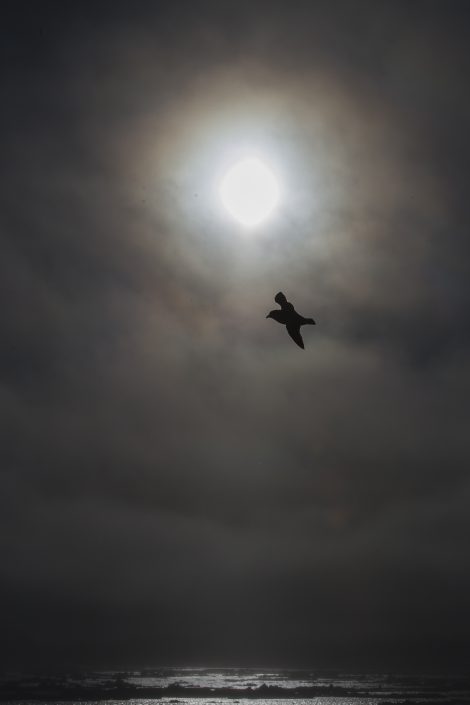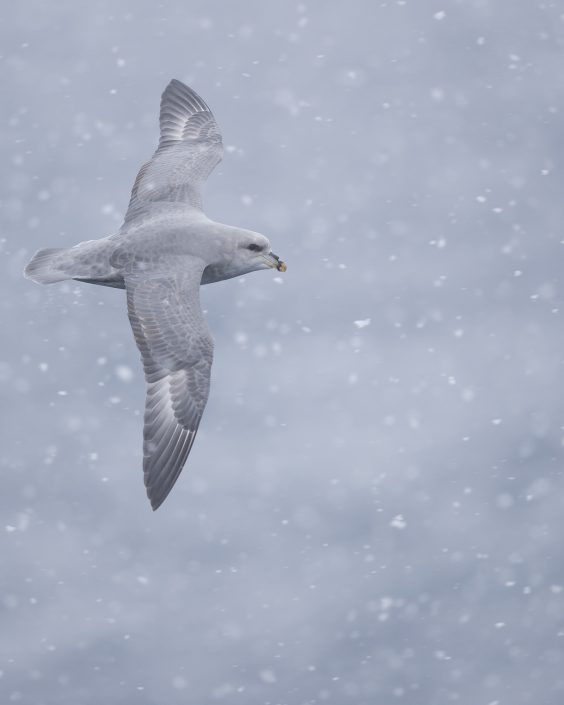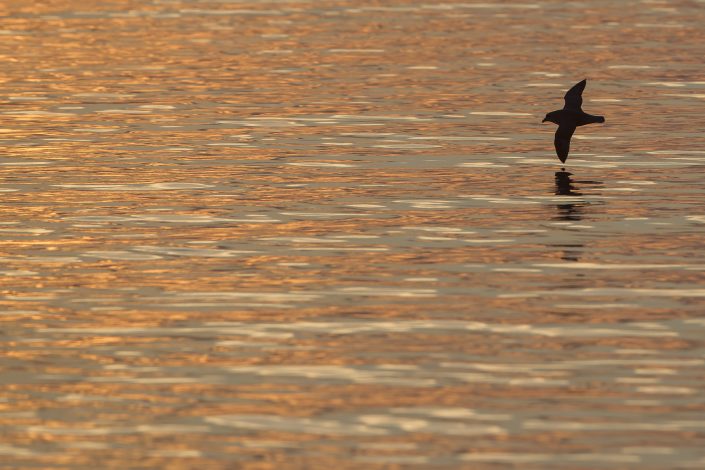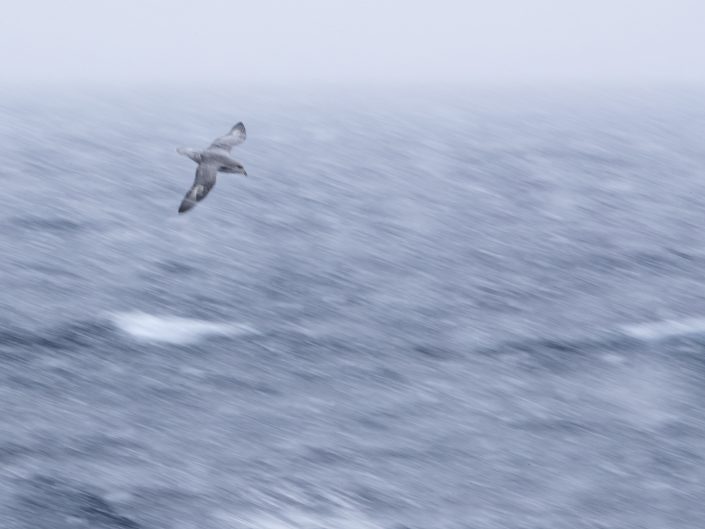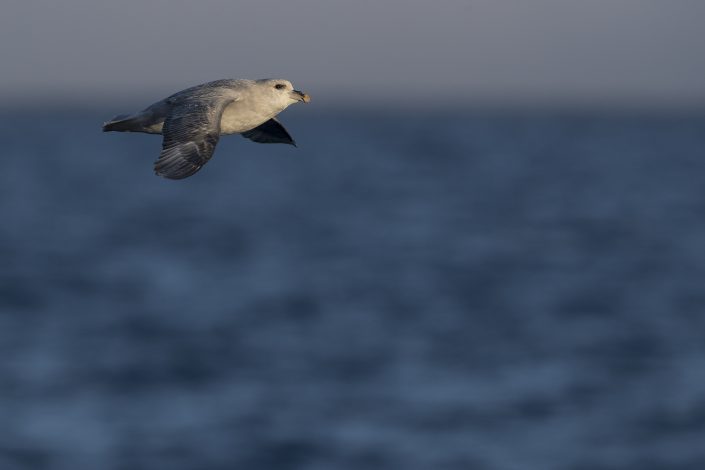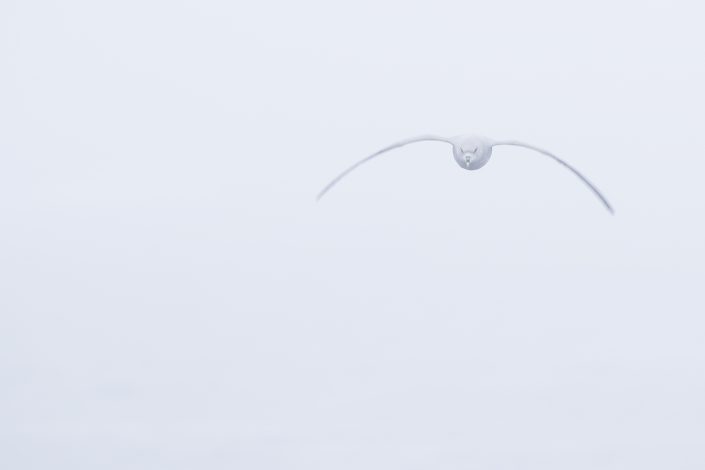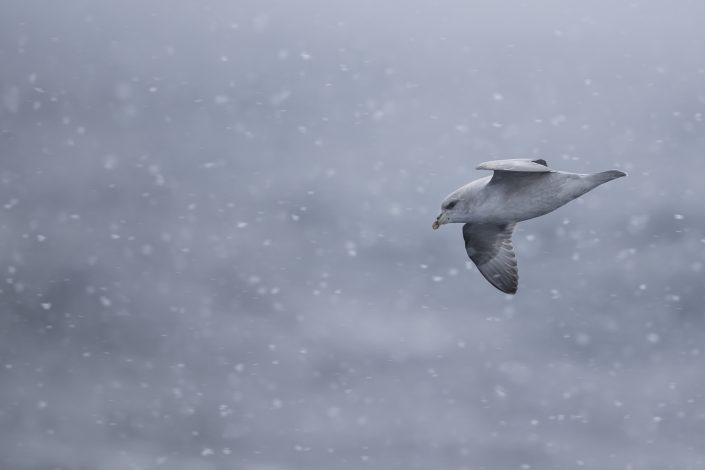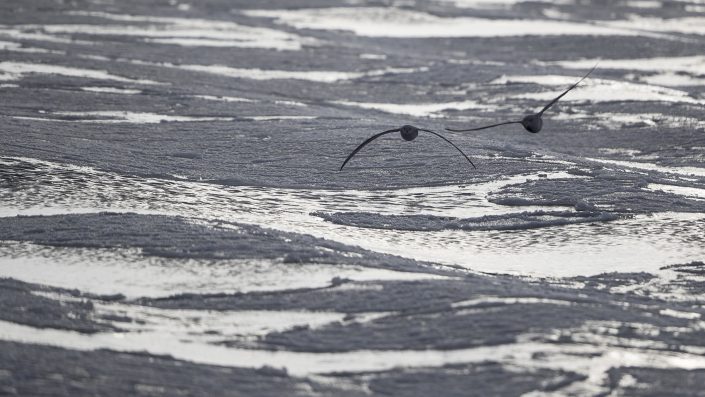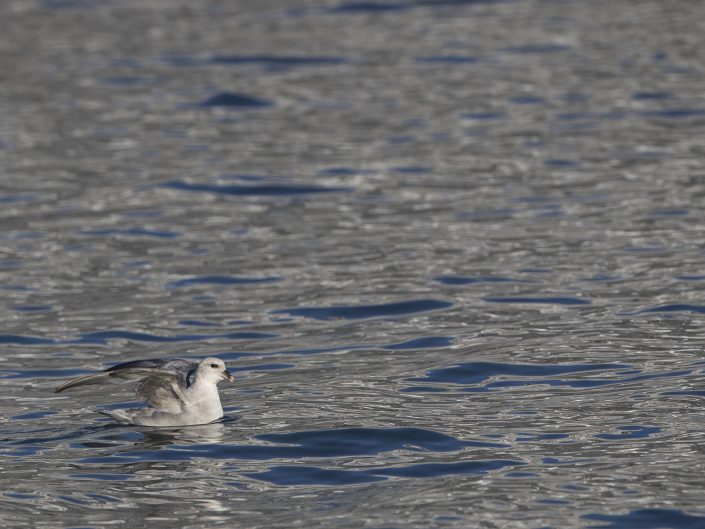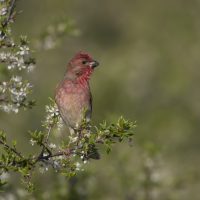This post is also available in: Swedish
Fulmar – Fulmarus glacialis
Fulmar – Fulmarus glacialis
Fulmar,or Arctic fulmar is a highly abundant sea bird found primarily in subarctic regions of the North Atlantic and North Pacific oceans. There has been one confirmed sighting in the Southern Hemisphere, with a single bird seen south of New Zealand. Fulmars come in one of two color morphs: a light one, with white head and body and gray wings and tail, and a dark one which is uniformly gray. Though similar in appearance to gulls, fulmars are in fact members of the family Procellariidae, which include petrels and shearwaters. The northern fulmar and its sister species, the southern fulmar (Fulmarus glacialodes), are the extant members of the genus Fulmarus. The fulmars are in turn a member of the order Procellariiformes, and they all share certain identifying features. First, they have nasal passages that attach to the upper bill called naricorns; however, nostrils on albatrosses are on the sides of the bill, as opposed to the rest of the order, including fulmars, which have nostrils on top of the upper bill. The bills of Procellariiformes are also unique in that they are split into between seven and nine horny plates. One of these plates makes up the hooked portion of the upper bill, called the maxillary unguis. They produce a stomach oil made up of wax esters and triglycerides that is stored in the proventriculus. This can be sprayed out of their mouths as a defense against predators from a very early age, and as an energy rich food source for chicks and for the adults during their long flights. It will mat the plumage of avian predators, and can lead to their death. Finally, they also have a salt gland that is situated above the nasal passage that helps desalinate their bodies, due to the high amount of ocean water that they imbibe. This gland excretes a high saline solution from their nose.
It sounds like this
Recording by Timo Janhonen from Xeno canto



